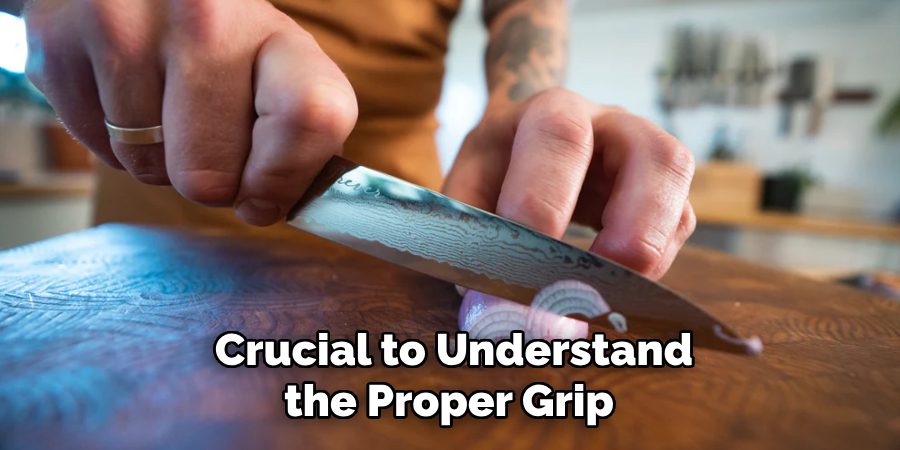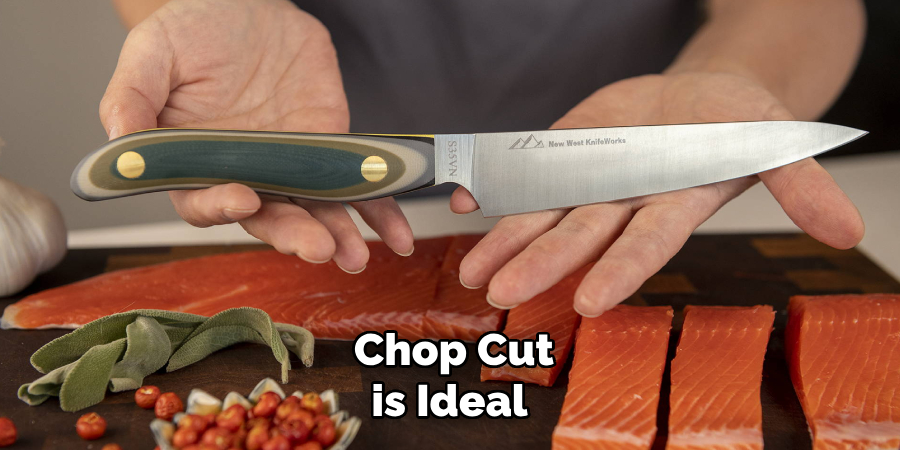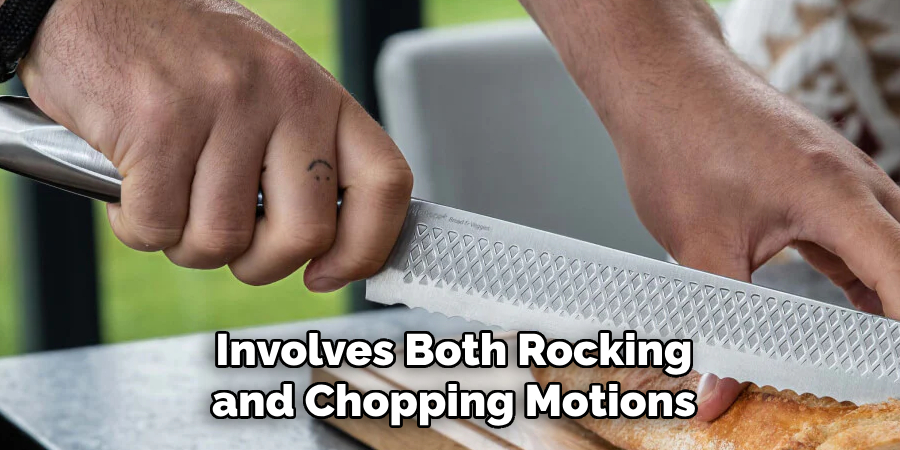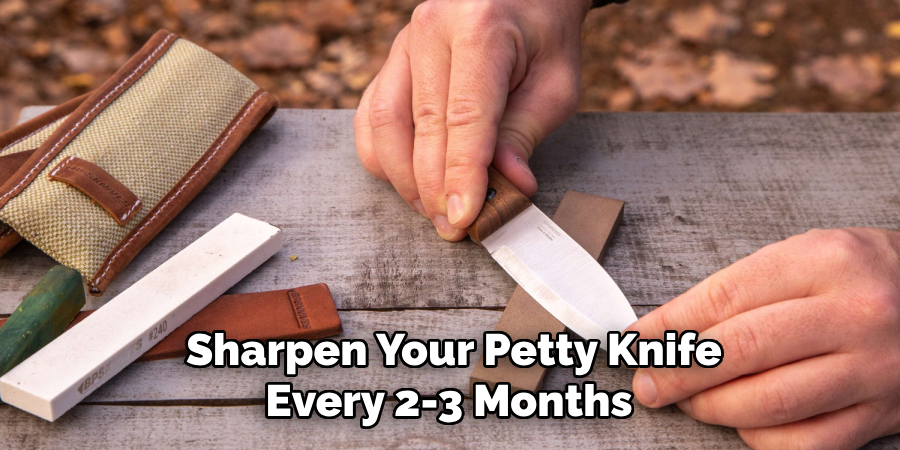A petty knife is an essential tool in any kitchen, prized for its versatility and precision. Typically smaller and lighter than a chef’s knife, the petty knife excels in tasks that require attention to detail, such as peeling, trimming, or cutting smaller produce.
It’s the ideal tool for those who enjoy intricate food preparations without compromising on control or comfort. Whether you’re a professional chef or a home cook, understanding how to properly use a petty knife can significantly enhance your culinary skills, allowing for more efficient and enjoyable cooking experiences.

In this blog post on how to use a petty knife, we will cover the basics of petty knife anatomy, grip and technique, as well as some helpful tips to elevate your cutting skills.
What is a Petty Knife?
A petty knife, also known as a utility or paring knife, typically ranges from 4 to 7 inches in length and has a narrow blade with a pointed tip. Its size makes it perfect for delicate tasks that require precision, such as deveining shrimp, hulling strawberries, or intricate garnishes.
Unlike a chef’s knife, which is designed for heavy-duty cutting and chopping, the petty knife is meant for more detailed work. However, don’t underestimate its capabilities – with proper technique and sharpness, it can handle most kitchen cutting tasks with ease.
Needed Materials
- A Petty Knife
- A Cutting Board
- Your Choice of Produce or Ingredients to Cut
9 Methods on How to Use a Petty Knife
Method 1: Understanding the Petty Knife Grip
Before we jump into cutting techniques, it’s crucial to understand the proper grip for holding a petty knife. The key is to have a firm but relaxed grip, allowing for better control and agility.

To hold a petty knife correctly, follow these steps:
- Begin by wrapping your dominant hand around the handle of the knife with your index finger resting on top of the blade’s spine.
- Use your thumb and middle finger to create a secure grip on either side of the handle.
- Keep your ring finger and pinky finger curled slightly towards your palm for added stability.
- For extra control, rest your other hand lightly on top of the blade near its tip.
Method 2: Basic Cutting Technique – The Push Cut
The push cut is the most common and straightforward cutting technique used with a petty knife. It involves pushing the blade straight down onto the food, using a rocking motion to slice through it.
To perform this technique:
- Begin by placing your desired produce on a cutting board.
- Using your dominant hand’s grip, position the petty knife perpendicular to the food, with its tip touching the cutting board.
- Apply gentle pressure while simultaneously pushing forward and downwards, slicing through the produce in one smooth motion.
- Continue to repeat this process until you have sliced through all of your ingredients.
Method 3: Basic Cutting Technique – The Draw Cut
Similar to the push cut, the draw cut is also used for slicing through food. However, instead of pushing down on the knife, this technique involves pulling it towards you.
To perform this technique:
- Start with your dominant hand’s grip on the petty knife and position it at a slight angle over your desired produce.
- Apply gentle pressure while pulling the blade towards you in a smooth motion.
- Repeat until you have sliced through all of your ingredients.
Method 4: Basic Cutting Technique – The Chop Cut
The chop cut is ideal for tough or root vegetables that require more force to slice through them. Unlike the push or draw cuts, this technique involves a downward chopping motion.

To perform this technique:
- Begin with your dominant hand’s grip on the petty knife, holding it towards the end of the handle.
- Place the blade on top of your desired produce and begin to chop downwards with a swift and controlled motion.
- Repeat until you have cut through all of your ingredients.
Method 5: Basic Cutting Technique – The Rock Chop
The rock chop is a combination of both rocking and chopping motions, making it ideal for herbs or smaller vegetables that require more precision.
To perform this technique:
- Begin by placing your desired produce on a cutting board.
- Hold the petty knife in your dominant hand’s grip and position it at a slight angle over the food.
- Apply gentle pressure while simultaneously rocking the blade back and forth, using a chopping motion as you do so.
- Repeat until you have sliced through all of your ingredients.
Method 6: Basic Cutting Technique – The Pull Chop
Similar to the rock chop, the pull chop also involves both rocking and chopping motions. However, instead of pushing down on the blade, this technique involves pulling it towards you.

To perform this technique:
- Start with your dominant hand’s grip on the petty knife, holding it towards the end of the handle.
- Position the blade at an angle over your desired produce and apply gentle pressure while pulling it towards you in a smooth motion.
- Repeat until you have sliced through all of your ingredients.
Method 7: Peeling Technique – The Draw Stroke
The drawstroke is the go-to technique for peeling fruits and vegetables with a petty knife. It involves using the blade’s sharp edge to remove the outer layer of skin, similar to how one would use a peeler.
To perform this technique:
- Begin by holding the petty knife near its tip with your dominant hand’s grip.
- Position the blade at an angle over your desired produce and gently pull it towards you in a smooth motion.
- Continue this process until you have peeled off all unwanted skin or rinds.
Method 8: Slicing Technique – The Stab Cut
The stab cut is ideal for cutting through denser foods, such as meat or cheese. It involves using a stabbing motion to puncture and slice through the food.
To perform this technique:
- Begin by holding the petty knife with your dominant hand’s grip and position it at an angle over your desired food item.
- Apply gentle pressure while pushing the blade straight down into the food with a stabbing motion.
- Continue until you have sliced through all of your ingredients.
Method 9: Dicing Technique – The Rock Chop + Chop Cut
Dicing is a common technique used in cooking, and with a petty knife, it can be easily achieved with a combination of the rock chop and chop cut methods.
To perform this technique:
- Begin by holding the petty knife in your dominant hand’s grip and position it at an angle over your desired food item.
- Apply gentle pressure while simultaneously using a rocking motion back and forth to create horizontal slices.
- Once you have created multiple horizontal slices, use the chop-cut method to make vertical cuts, resulting in small diced pieces.
Following these basic cutting techniques on how to use a petty knife will help you become more comfortable and confident in using a petty knife for all your slicing, dicing, and peeling needs. Remember to always practice caution and proper knife safety while using any kitchen tool. Happy cooking!
Frequently Asked Questions
Q: Can I Use a Petty Knife for Larger Produce or Meats?
A: No, a petty knife is best used for smaller and more delicate foods. For larger items, it is recommended to use a chef’s knife or santoku knife for better control and strength.
Q: How Do I Maintain a Sharp Edge on My Petty Knife?
A: To maintain a sharp edge, it is essential to regularly sharpen your petty knife using a honing rod or stone. Avoid using the dishwasher to clean your knife, as the high heat and harsh detergents can dull the blade. Instead, hand wash it with warm water and mild soap after each use and dry it immediately.
Q: Can I Use a Petty Knife for Non-Food Items?
A: It is not recommended to use a petty knife for non-food items as it can lead to damage or premature dulling of the blade. It is best to stick with using it solely for food preparation.
Q: How Often Should I Sharpen My Petty Knife?
A: It is recommended to sharpen your petty knife every 2-3 months with regular use. However, if you notice the blade becoming dull or not cutting as smoothly, it may be time to sharpen it sooner.
Q: Can Left-Handed Individuals Use a Petty Knife?
A: Yes, left-handed individuals can use a petty knife just like right-handed individuals. However, it is essential to find a grip and technique that feels comfortable for you and allows for proper control of the knife.
Q: Is It Safe to Use a Petty Knife on a Cutting Board?
A: Yes, using a petty knife on a cutting board is safe and recommended for stability and control. Always make sure to use a clean and stable cutting board to prevent accidents or injuries.

Conclusion
With these nine methods on how to use a petty knife, you’ll be able to tackle any cutting task in the kitchen with ease. Remember always to practice proper knife safety and maintain a sharp blade for the best results. With practice, you’ll find which techniques work best for different types of ingredients and dishes. Happy cooking!
Edmund Sumlin is a skilled author for Metal Fixes, bringing 6 years of expertise in crafting a wide range of metal fixtures. With a strong background in metalwork, Edmund’s knowledge spans various types of fixtures, from decorative pieces to functional hardware, blending precision with creativity. His passion for metalworking and design has made him a trusted resource in the industry.
Professional Focus:
- Expert in Metal Fixtures : Edmund aesthetic specializes in creating durable and innovative metal fixtures, offering both appeal and functionality. His work reflects a deep understanding of metalworking techniques and materials.
- Sustainability Advocate : He is dedicated to using sustainable practices, ensuring that every fixture is crafted with eco-friendly methods while maintaining high-quality standards.
In his writing for Metal Fixes, Edmund provides valuable insights into the latest trends, techniques, and practical advice for those passionate about metal fixtures, whether they are professionals or DIY enthusiasts. His focus on combining artistry with engineering helps others discover the true potential of metal in design.


